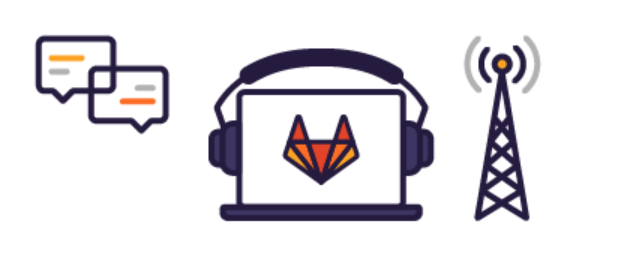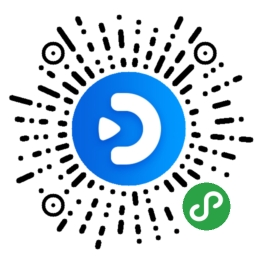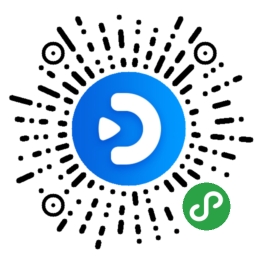GitLab (GTLB.US) 2026财年第一季度业绩电话会
文章语言:
简
繁
EN
Share
Minutes
原文
会议摘要
GitLab reports 27% revenue growth, attributing success to its AI-native DevSecOps platform, enhanced customer value through AI integration, and strong adoption of AI solutions like GitLab Duo Enterprise. The company focuses on five key AI areas, addresses job market concerns, and projects continued financial growth.
会议速览
A conference call discusses GitLab's financial results for the first quarter of fiscal year 2026, including business overviews, results commentary, and guidance for the upcoming quarters and fiscal year. The call also covers safe harbor statements, non-GAAP financial measures, and procedures for asking questions.
Revenue saw a 27% year-over-year increase to 215 million with a 12% non-GAAP operating margin, highlighting the platform's unique AI-native, cloud-agnostic, model-neutral capabilities across the software development lifecycle, offering value in air-gapped environments with a unified data store.
As organizations seek to maximize efficiency and gain competitive advantage through software, the Jeeves econs platform emerges as a core solution. By leveraging AI in software development, enterprises can maintain security and compliance while accelerating feature development, as exemplified by Super Micro's successful implementation resulting in doubled software team size and significantly faster development cycles.
In Q1 2025, Gitlab introduced major updates across its platform, focusing on enhancing Core DevOps capabilities, deepening security measures, and integrating AI natively. Key developments include centralizing artifact management, optimizing CICD pipelines, improving security visibility and control, and launching AI-enhanced features like chat and code suggestions. Notable expansions and partnerships, such as with R+V Insurance and Volkswagen Digital Solutions, showcased significant productivity gains and pipeline acceleration. The company also highlighted growing adoption of Gitlab Duo, particularly Duo Enterprise, and positive feedback from beta testers of the upcoming Gitlab Duo Workflow.
The company announces its FedRAMP moderate authorization, boosting its public sector business. It highlights significant adoptions across industries, particularly in security-conscious sectors, enabled by providing enterprise-grade isolation with cloud-native convenience. Key acquisitions and expansions, including those by a German automotive supplier and Natwest, showcase the platform's ability to streamline complex environments and improve development cycles. The dialogue also emphasizes the importance of customer contributions to the platform, driving innovation and feature velocity, and underscores the company's vision to become the world's best AI-native DevSecOps platform.
The company experienced significant revenue growth, free margin expansion, and record adjusted free cash flow in the first quarter. Revenue reached $214.5 million, a 27% increase from the prior year, with over 95% contributed by 10,100 customers spending at least $5000. The customer base with spend of $1000 or more increased by 26%. The retention rate stood at 122%, driven by a combination of new seats, upgrades, and strengthened ultimate and alab Do as customers expand AI deployments. The company anticipates fluctuations in these ratios based on the composition of the renewable portfolio.
GitLab reports significant year-over-year growth in Total RP and CRP, maintaining best-in-class gross margins. Q1 non-GAAP operating income saw a substantial increase from a loss to $26.1 million. Guidance for Q2 FY26 expects total revenue growth of around 24%, with full-year expectations similarly robust. The company highlights strong fundamentals, record adjusted free cash flow, and a goal to deconsolidate its joint venture, jihu.
The team highlights the strong Q1 performance, emphasizing growth, increased operating leverage, and the momentum in AI adoption. They introduce GitLab 18, showcasing new secure, scalable AI capabilities, and invite participants to a launch event on June 24. Discussions revolve around the impact of AI on coding, specifically focusing on code suggestion and completion, and how GitLab adds value beyond these features. Customer conversations are centered on utilizing AI to enhance productivity, accelerate innovation, and improve quality. The CEO shares insights on the competitive landscape, noting that customers are testing multiple AI tools side by side to ensure they provide the best for their engineers, ultimately benefiting GitLab by increasing the need for its platform in testing, publishing, and other post-code creation activities.
The discussion highlights the company's recent financial performance, noting a minimal revenue beat and steady guidance post-IPO. Key metrics such as RPO, CRP, and billings are strong, attributed to a favorable SaaS mix and back-weighted linearity in the quarter. The quarter had fewer days than the prior year, and the guidance assumes consistent macroeconomic conditions.
Observations note a slight deceleration in net new customer ads, particularly for those above specific spending thresholds, prompting inquiries into potential correlations with recent premium pricing adjustments.
The company has improved its volume of new first orders for enterprise and mid-market segments, with a focus on increasing dollars added within the quarter. The breakdown of new customer ads greater than 5K includes new customers, lost customers, expanding and contracting customers, with notable changes in customers moving into or out of the 5K bucket. Price sensitivity is observed in the SMB and lower mid-market segments, affecting new customer additions, but not the financials. Compensation is based on quarterly bookings, not new customer ads.
The discussion delves into concerns about artificial intelligence's effect on software developer job growth, noting strong AI adoption in developer use cases and proven productivity gains. Speakers address the historical trend of productivity advancements leading to increased opportunities for engineers, predicting sustained or growing numbers of software developers due to AI's ability to enhance coding capabilities and increase code volumes. Additionally, insights are shared on seat trends during renewals and the positive impact of AI on Gitlab's business model, emphasizing the large market potential and recent positive trends in developer hiring.
The dialogue discusses Gitlab's strategy to integrate AI into its platform to enhance collaboration, security, and efficiency in software development. Key focuses include building a unique collaborative experience, maintaining open-source and co-creation strategies, ensuring security and privacy, utilizing a single database platform approach, and integrating software lifecycle agents natively. The discussion also touches on changes in customer tier preferences and implications for expansion rates and pricing models.
The speaker discusses the trend of customers increasingly opting for the Ultimate package due to its security offerings, aligning with the market's shift towards integrating security in the DevOps lifecycle. While most customers start with the Premium package, the Ultimate upgrade serves as a significant expansion path. The company also addresses the decision to make Enterprise available to Premium customers, driven by demand for self-hosted models and AI capabilities, without impacting the upgrade to Ultimate. This strategic move aims to expand the service addressable market through more flexible packaging.
The company reports significant free cash flow in Q1 without any one-time factors, indicating strong business operations. Seasonality suggests Q4 could bring even higher margins. Amidst AI experimentation and vendor testing in the market, the company expresses confidence in its competitive edge, citing wins against leading competitors and positive feedback on its Gitlab Duo workflow product, set for public beta release later in the summer.
The discussion highlights GitLab's approach to integrating AI tools into its Premium and Ultimate offerings, aiming to lower adoption barriers for engineers. By including AI capabilities with usage limits, developers can easily start using the tools, leading to a smoother transition to Pro and Enterprise levels. Additionally, the conversation touches upon the differentiation of GitLab's enhanced minutes with GIWA ED, emphasizing the platform's focus on innovation, high-quality context, and improved outcomes.
Highlighting the significant advancements and innovations in Gitlab's offerings, including 100 new capabilities for premium customers and more for ultimate customers, with a focus on improved CICD pipelines, enhanced security features, and the introduction of AI-driven asynchronous work and collaborations.
The discussion focuses on the rationale behind the narrower-than-expected beat in Q1 results against guidance, noting the impact of fewer days in the quarter. Attention is also given to the assumptions made for Q2 guidance, particularly regarding the continuation of the macro environment since April, and inquiries about similarities or differences observed in May and early June compared to April.
Despite a cautious market environment, the company experienced a strong quarter with a mix favoring ZAS, recognizing more revenue upfront. Federal business exceeded expectations, showing significant year-over-year growth.
The discussion focuses on GitLab's recent quarter performance, noting an unusual SaaS linearity and exploring whether this is due to macroeconomic factors or execution issues. Metrics tracked internally include linearity, pipeline creation, and pipeline movement. The CFO emphasizes continuous improvement in execution across the organization, without specific quarter-related concerns being highlighted.
On June 11, 2025, a dialogue unfolds exploring the limits of future technological capabilities, questioning if current boundaries can ever be transcended.
The discussion explores the potential disruptions and benefits AI coding systems pose to established DevOps tool chains, emphasizing the importance of interoperability and open platforms. It also highlights the strategic approach to AI integration across the software lifecycle, including partnerships and product enhancements, to maintain competitiveness and innovation.
要点回答
Q:What are the key financial results for the first quarter of fiscal year 2026?
A:First quarter revenue increased 27% year over year to $215 million with a non GAAP operating margin reaching 12%.
Q:What strategic differentiators position Gitlab advantageously in the market?
A:Gitlab's strategic differentiators include being the only AI native, cloud agnostic, model-neutral DevSecOps platform capable of running anywhere, including air gap environments. It offers comprehensive solutions across the software development lifecycle with built-in contextual AI, which is possible on a platform with a unified data store.
Q:How is the volume of code expected to change with the empowerment of more code creators by AI tools?
A:With the empowerment of more code creators by AI tools, the volume of code being created is expected to expand significantly.
Q:What is the significance of the customer, Super Micro, upgrading to Gitlab Premium and Duo Pro?
A:Super Micro, an AI solutions provider, upgraded from their free tier to Gitlab Premium and Duo Pro in Q1 to build an internal software acceleration program targeting 2x faster feature development for their end-to-end AI infrastructure solutions.
Q:What are the recent advancements in Gitlab's security capabilities?
A:Recent advancements in security capabilities include custom frameworks to design, implement, and enforce compliance, vulnerability dashboards to pinpoint critical findings, and innovations to improve detection accuracy, reduce false positives, and focus on code that threat actors can exploit.
Q:What are the latest developments with the Gitlab AI solution, dubbed Gitlab Duo workflow?
A:Gitlab launched the private beta of its AI solution, Gitlab Duo workflow, in Q1. The feedback from participants was positive, with 82% of surveyed users expressing satisfaction or very satisfaction with the capabilities. This led to plans for a wider release later in the year.
Q:What were the revenue and customer growth figures for the first quarter?
A:For the first quarter, revenue reached $214.5 million, an increase of 27% from the prior year. There were 10,100 customers with more than $5,000 in annual revenue, contributing over 95% of total revenue. The company also saw a 26% year-over-year increase in customers spending more than $1,000.
Q:What are the financial highlights of the first quarter in terms of operating income and guidance for the upcoming quarters?
A:The non GAAP operating income for Q1 was $26.1 million, showing a marked improvement from a loss of $3.8 million in Q1 of the previous year. The company has an expectation for total revenue of $226 million to $227 million in the second quarter of FY 26, with a projected non GAAP operating income of $23 million to $24 million. For the full year, the guidance is set for total revenue of $936 million to $942 million, with a non GAAP operating income of $117 million to $121 million, and a non GAAP net income per share of 74 cents to 75 cents.
Q:What is the adjusted free cash flow and how is it affected by ongoing improvements and seasonality?
A:The adjusted free cash flow for Q1 was $104.1 million, which is a record margin at 49%. It is driven by improvements in operating leverage and Q4 to Q1 seasonality in collections. The company ended the quarter with $1.1 billion in cash and investments, providing significant financial flexibility.
Q:What is the update on Jiayu, the joint venture, and how is it expected to affect future financials?
A:The non GAAP expenses related to Jiayu were $14 million compared to $13 million in the same period last year. The company's goal is to deconsolidate Jiayu, but the likelihood and timing of this cannot be predicted. For FY23 modeling purposes, they forecast approximately $14 million of expenses related to Jiayu, compared with $13 million from last year.
Q:What is the strategic focus of customer conversations regarding AI adoption in the coding space?
A:The strategic focus of customer conversations regarding AI in the coding space is on how AI can make teams more productive, accelerate innovation, improve quality, and enhance all aspects of software development. The customers are actively exploring ways to utilize AI and are open to experimenting with different tools to ensure they provide their engineers with the best resources.
Q:What are the reasons behind the revenue growth and the sequential customer adds deceleration?
A:The revenue growth is attributed to a revenue mix that favored more SaaS and linear revenue recognition in the quarter. However, the sequential customer adds have decelerated. There was no surprise in the execution; however, the deceleration may be tied to pricing changes announced in the quarter. Further analysis is needed to understand the exact cause behind the deceleration in new customer additions.
Q:What was the company's objective related to new first orders and how did it perform this quarter?
A:The company's objective was to increase the volume of new first orders on a logo basis. It performed better this quarter than last year for the enterprise and mid-market segment and significantly improved in terms of dollars added within the quarter.
Q:What were the components of new customer adds greater than 5K and what was the biggest change?
A:The components of new customer adds greater than 5K include new customers, lost customers in turn, customers expanding into the 5K bucket, and customers contracting into the 5K bucket. The biggest change was in customers expanding into the 5K bucket and customers contracting into the 5K bucket, accounting for 160 different logos year over year.
Q:What does the company not compensate on and how does this impact new customer adds?
A:The company does not compensate on new customer adds but on bookings within the quarter. This means that although new customer adds at greater than 5K did not concern the company, it affects financials through the impact on bookings.
Q:Is there a reason to be worried about job growth in the software developer market due to AI adoption?
A:There is no need to be worried about job growth in the software developer market as the adoption of AI. Advances in productivity and higher levels of abstraction in software engineering have historically led to more opportunity and did not result in fewer software engineering jobs. With AI, the number of engineers is expected to continue to be sustained and possibly grow, as the power of AI increases the number of people who can create code without needing deep technical skills.
Q:How does the company view the impact of AI on demand for developers and its pricing model?
A:The company views the impact of AI on demand for developers positively. As AI increases productivity and abstraction in software engineering, it creates more opportunity and is expected to sustain or even increase the number of developers. This growth aligns with the company's pricing model, as it will benefit from an increase in users and code volumes, which are important for the business.
Q:What does the company's seat trend and dollar base net retention rate indicate?
A:The seat trend and dollar base net retention rate indicate that 80% of the contribution came from seats, which is a result of a combination of large deals and additional seats sold for Duo and add-on SKUs. The company is happy with the number of additional seats being sold to its customer base.
Q:How is GitLab positioned to address the bottleneck created by AI in customer workflows?
A:GitLab is well-positioned to address the bottleneck created by AI in customer workflows as it infuses AI. The company's strategy is to extract value aligned with the benefits customers enjoy beyond coding, despite pricing being seed basis.
Q:What are the five ways the company is focusing on creating value and differentiation with its AI approach?
A:The company is focusing on creating value and differentiation with its AI approach in five ways: by building on its core strength of enabling collaboration and team building across the software lifecycle, by pursuing a unique collaborative experience with many-to-many interactions between humans and AI agents, by extending its reputation for open source and co-creation into AI, by providing pervasive extensibility and flexibility, and by adopting an open community approach for catalog and agent discovery and development.
Q:What changes have been made to enhance collaboration between humans and software lifecycle agents in GitLab?
A:GitLab is integrating software lifecycle agents natively into its platform to allow premium and ultimate customers to collaborate with them seamlessly. This integration is part of the groundwork being laid for human-to-agent collaboration, with features like Du chat and Du code suggestions in place to facilitate this.
Q:How has the adoption of the Ultimate tier changed over the last few quarters, and what is the impact on customer expansion rates?
A:There has been a noticeable increase in customers opting for the Ultimate tier, which is attributed to the robust security offerings and the market trend of shifting left in the DevOps lifecycle. Most customers start with the cheaper, more accessible Premium tier and then transition to Ultimate as they scale. This strategy of landing and expanding with customers is working well and is expected to continue.
Q:What is the rationale behind making the Enterprise product available to Premium customers?
A:The Enterprise product is being made available to Premium customers due to the demand observed from these customers for certain capabilities such as self-hosted models and AI integration across the software lifecycle. The decision is not seen as a significant risk in expanding the addressable market, given that many customers already purchase both Ultimate and Enterprise together.
Q:What was the reason for the strong free cash flow generation in Q1, and is there anything anomalous about it?
A:The strong free cash flow of over $100 million in Q1 was a result of normal business operations and the collection of cash, rather than any one-time event. Q4 is typically the strongest quarter for free cash flow, but there were no anomalies in Q1 that would suggest an atypical result.
Q:How does GitLab ensure its competitive advantage in the market, especially when customers are testing multiple vendors?
A:GitLab engages directly with customers who are testing multiple vendors and has observed success in winning against leading competitors. They have a strong strategy and differentiation, and the upcoming public beta and GA releases of the Gitlab Duo workflow product are expected to further strengthen their competitive position.
Q:What is the strategy behind including AI tools in Gitlab Premium and Ultimate?
A:The strategy behind including AI tools in Gitlab Premium and Ultimate is to provide a no-friction, no-barrier approach to AI adoption for engineers. This decision aims to eliminate friction for adoption and lower the barrier to accessing full AI capabilities from Gitlab. Although usage is limited, developers can try it out and then smoothly transition to Pro and Enterprise plans.
Q:What new AI capabilities and innovations were highlighted for Gitlab?
A:New AI innovations highlighted for Gitlab include a bold new vision, agentic chatbots, and the ability to do asynchronous work and many-to-many collaborations between humans and agents. These features are expected to roll out in the future, building on the recently unlocked duo chat and duo code suggestions for all customers.
Q:What were the reasons for the tight revenue guidance in Q1?
A:The tight revenue guidance in Q1 was not specifically attributed to the number of days in the quarter, as the company was aware of the fewer days at the outset. The guidance was primarily affected by the revenue recognition mix favoring SaaS and a more back-end weighted revenue recognition within the quarter, which remains cautious but indicates continued sales despite macroeconomic concerns.
Q:How did the revenue mix affect Q1 results?
A:The revenue mix in Q1 affected results by having a greater focus on SaaS, which tends to be more front-end weighted in revenue recognition. This contributed to the revenue recognition being more back-end weighted from an environment perspective, resulting in a more cautious outlook despite customers still buying into the product.
Q:What metrics does the company track internally to gauge macroeconomic impacts?
A:Internally, the company tracks metrics such as the linearity within a quarter, pipeline creation, and pipeline movement to understand the macroeconomic impact. They have been monitoring these metrics over several years and have a plan to track performance against them.
Q:Does Gitlab see AI tools as complementary or competitive to its offerings?
A:Gitlab sees AI tools as complementary to its offerings. The company believes in interoperability and being an open platform, embracing tools like cursors and windsurfs that assist engineers in creating applications. The strategy is to strengthen its role in the DevOps lifecycle where it is already world-class while also benefiting from the innovations that AI brings.

Gitlab, Inc. Class A
Follow





